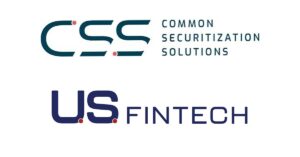The complexities of today’s real estate market are causing prospective homebuyers to cautiously weigh their options before acting. When they are ready to act, like the typical American consumer, they want personalized and relevant offers and recommendations. Yet many mortgage lenders are falling short of these expectations.
By using consumer data, mortgage originators can improve and personalize a borrower’s experience throughout their homebuying journey. Identity management programs can locate precisely who to contact and when to reach out with targeted marketing messages. The first step is to determine the person behind the mask of every digital interaction — a process known as identity resolution.
Digitally connected
Knowing when a consumer engages with a brand helps marketers know what messages to send and when to send them.
A critical first step to solving the identity puzzle is to accurately identify consumers across multiple devices and marketing channels. Identity resolution is the process of linking separate data sets to create one centralized consumer profile. Identity resolution creates a more complete view of the consumer. It ensures accurate and complete contact information is stored in a company’s customer relationship management platform, and it helps companies recognize when a consumer lands on their website. Knowing when a consumer engages with a brand helps marketers know what messages to send and when to send them.
After building a more complete view of who a consumer is and how to reach them, lenders and originators can begin to leverage real-time consumer behavior data and identify actions that signal purchasing intent. This is called identity management. It is information that goes beyond static demographics to help marketers understand who the person is on paper, where they are in their buying journey and, only then, how they fit into the lender’s marketing strategy.
For example, instead of relying on static demographic information to send canned marketing messages to unidentified homebuying prospects, identity management data detects when prospects are actively researching mortgage rates, filling out online forms or initiating a credit check — actions that signal intent. This real-time data points marketers toward prospects who are more likely to convert into a closed sale, optimizing marketing resources and enhancing the return on investment.
Effective data
Mortgage originators often know that data can play a significant role in identifying specific behaviors along a potential homebuyer’s journey. Lenders and the originators who work with them want to focus their time and resources on marketing efforts that deliver results, not mountains of useless consumer data.
Effective consumer identity resolution solutions navigate data-driven challenges. They understand that too much data can lead to uncertainty, leaving lenders perplexed on how best to use valuable first-party data or how to optimize their customer relationship management systems.
The right data identifies the best prospects and alerts lenders when these prospects are online and in market; good timing is vital when marketing to prospective homebuyers. Furthermore, good data can reveal which marketing channels to use to reach a prospect — be it a well-timed phone call or a strategically placed ad — that is contingent on consumer preferences or their position in the purchase journey.
Using real-time consumer data, marketers can confidently tailor messaging, focus spending, and enhance cross-selling or upselling efforts with personally relevant content. When done right, these seamless online experiences can lead to improved return on investment and endear consumers to brands, especially in consumer-centric mortgage lending.
Personalized attention
In a typical homebuying journey, consumers perform extensive research and comparison shop over time. In the wake of rising home prices, higher interest rates and skyrocketing consumer prices, many prospective homebuyers and sellers are taking a wait-and-see approach.
September 2022 existing home sales fell 1.5% from the prior month and were down nearly 24% from one year earlier, according to Federal Reserve economic data. Consumers, however, are still shopping.
As the costs to finance a mortgage become more expensive, prospective homebuyers are cautiously watching and researching, which prolongs the comparison-shopping journey. When facing hesitant homebuyers, it is more important than ever for lenders and originators to optimize their marketing expenses and utilize personalized offers that stand out in a crowded and competitive lending environment.
Identity management data can show a consumer’s ability to purchase a product and help to personalize the offer. It also can help to create seamless client interactions and improve the journey. Other benefits of successful identity management programs include:
- Personalized inbound call tracking and improved overall client experience
- Increased conversion with user-friendly web forms
- Increased reach and scale of outbound campaigns
- Enriched and improved lead quality
- Improved attribution and post-sale analytics
- Improved customer relationship management data quality
Data can empower how marketers engage with consumers. To fully leverage the power of identity management, lenders must weigh their technological capabilities with company objectives. Not all lenders can navigate sophisticated marketing solutions on their own, but reliable partners can provide accurate and actionable client data solutions to ensure that consumer privacy considerations are prioritized.
Privacy regulations
Consumer data and privacy go hand in hand. Lenders must prepare for more stringent regulations that target the mortgage and financial-services industries and their methods for acquiring and retaining clients.
California is updating its consumer privacy legislation.
New state-level regulations have or will soon go into effect in Colorado, Connecticut, Virginia and Utah. Likewise, federal data protection legislation that establishes how companies should handle personal data is currently progressing in Congress.
Consumer privacy regulations such as the Telephone Consumer Protection Act require mortgage lenders to prioritize consent and confirm that every client has agreed to be contacted. When third-party leads are involved, it is the responsibility of the marketer to confirm that partners have properly secured leads and consent. To address potential consumer complaints, documenting the proof of consent is advisable.
To gain a competitive edge and drive profits in a complex mortgage market, originators must look beyond old data models and static demographics. In addition to creating the personalized experiences that consumers demand, identity management programs help marketers accurately identify consumers across devices and channels. This provides timely and relevant messaging while ensuring the highest standards for data security and privacy. ●
-
Natalie Mullen is the market leader of mortgage and banking at Jornaya. She is an advocate for empowering fellow marketers to redefine success through the connection of insightful data with powerful modern marketing technology. With more than 15 years of experience through her work at Jornaya, and previously at Oracle Marketing Cloud, Mullen has assisted hundreds of enterprise marketers to evolve into modern marketing strategists. She also is on the steering committee of the Women of Martech.
View all posts







